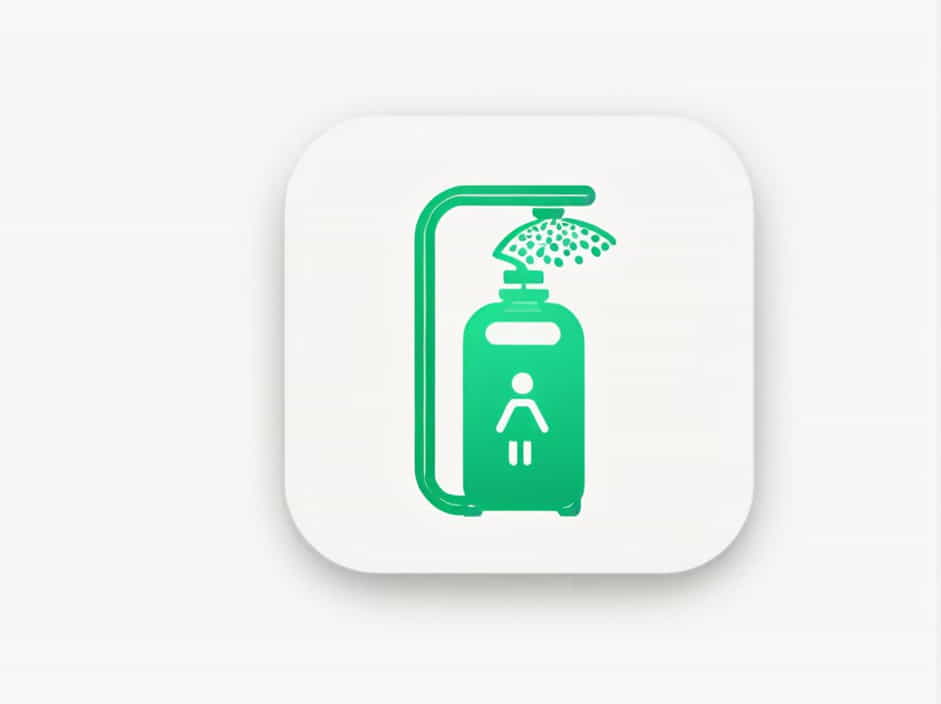A portable safety shower and eyewash station is a critical emergency safety device used in workplaces where workers may be exposed to hazardous chemicals, dust, or debris. These portable units provide immediate decontamination, preventing serious injuries or long-term health effects.
This topic will cover everything you need to know about portable safety showers and eyewash stations, including their importance, key features, proper use, and maintenance.
What Is a Portable Safety Shower and Eyewash Station?
A portable safety shower and eyewash station is a mobile, self-contained unit designed to provide quick rinsing of harmful substances from the body and eyes. Unlike fixed emergency showers, these units can be moved to different locations as needed, making them ideal for temporary work sites, outdoor environments, and areas without permanent plumbing.
Why Are Portable Safety Showers and Eyewash Stations Important?
1. Immediate Emergency Response
- Provides immediate decontamination in case of chemical spills or exposure.
- Reduces the risk of severe burns, blindness, or skin damage.
2. Compliance with Safety Regulations
- Many industries are required to follow OSHA (Occupational Safety and Health Administration) and ANSI (American National Standards Institute) Z358.1 standards for emergency eyewash and shower stations.
- Non-compliance can result in fines, legal issues, and increased workplace hazards.
3. Ideal for Remote or Temporary Work Areas
- Can be used in locations where plumbing is unavailable.
- Essential for construction sites, oil refineries, laboratories, and chemical plants.
4. Protects Workers from Hazardous Substances
- Prevents long-term health effects from chemical exposure.
- Helps reduce workplace accidents and improves overall safety.
Key Features of a Portable Safety Shower and Eyewash Station
1. Self-Contained Water Supply
- Stores sufficient clean water to provide at least 15 minutes of continuous flushing, as recommended by ANSI Z358.1.
2. Durable and Corrosion-Resistant Material
- Made from materials like stainless steel, polyethylene, or reinforced plastic to withstand harsh environments.
3. Easy Mobility and Setup
- Some models come with wheels or handles for easy transport.
- Can be set up without complex installation.
4. Dual Function: Shower and Eyewash
- Includes both a full-body safety shower and an eyewash station for comprehensive decontamination.
5. Hands-Free Activation
- Operated by a foot pedal, pull handle, or push lever, allowing quick and easy activation in an emergency.
6. Insulated or Heated Options
- Some units are designed for extreme weather conditions, ensuring water remains at a safe temperature in hot or freezing environments.
Where Are Portable Safety Showers and Eyewash Stations Used?
1. Industrial and Manufacturing Plants
- Used in chemical processing plants, oil refineries, and factories handling hazardous substances.
2. Laboratories and Research Facilities
- Protects lab workers from accidental chemical splashes.
3. Construction Sites
- Provides quick decontamination for workers exposed to dust, cement, or industrial chemicals.
4. Mining and Oil Fields
- Ensures emergency response in remote locations where fixed units are unavailable.
5. Warehouses and Storage Facilities
- Used in areas where hazardous materials are stored and handled.
How to Properly Use a Portable Safety Shower and Eyewash Station
1. Immediate Activation
- If exposed to chemicals, act quickly!
- Pull the shower handle or push the eyewash lever immediately.
2. Flush the Affected Area Thoroughly
- Stand under the safety shower for at least 15 minutes, ensuring full-body decontamination.
- Keep eyes open and flush with the eyewash station for at least 15 minutes.
3. Seek Medical Attention
- Even after rinsing, seek medical help immediately to prevent further injury.
4. Report the Incident
- Inform supervisors and safety officers about the exposure.
How to Maintain a Portable Safety Shower and Eyewash Station
1. Regular Water Refill and Replacement
- Stagnant water can develop bacteria. Always replace stored water every 1-3 months.
2. Weekly Inspection
- Check for leaks, blockages, or damage.
- Ensure water flow and pressure meet safety standards.
3. Clean and Sanitize the Unit
- Wash the eyewash nozzles, showerhead, and water tank to prevent contamination.
4. Keep the Unit Accessible
- Do not block the safety shower and eyewash station with equipment or materials.
- Place clear signage to help workers locate it easily.
Choosing the Right Portable Safety Shower and Eyewash Station
1. Capacity and Water Flow
- Ensure the unit provides at least 15 minutes of continuous flushing.
2. Environment Suitability
- Choose insulated or heated models for cold weather.
- Select UV-resistant models for outdoor use.
3. Mobility and Portability
- If frequent relocation is needed, choose a unit with wheels and easy transport features.
4. Compliance with Safety Standards
- Ensure the unit meets OSHA and ANSI Z358.1 requirements.
Common Mistakes to Avoid
1. Not Inspecting the Unit Regularly
- Failing to check the water supply and functionality can lead to malfunction in emergencies.
2. Using Contaminated or Stagnant Water
- Always replace stored water to prevent bacterial growth.
3. Blocking Access to the Station
- Never store objects near the safety shower or eyewash station.
4. Insufficient Training for Workers
- Ensure employees know how to use the equipment properly in an emergency.
A portable safety shower and eyewash station is an essential workplace safety device that provides immediate decontamination during chemical exposures or accidents. These self-contained units are ideal for temporary worksites, remote areas, and hazardous environments where fixed stations are unavailable.
By choosing the right model, ensuring regular maintenance, and training employees, businesses can enhance workplace safety, comply with regulations, and prevent serious injuries.
